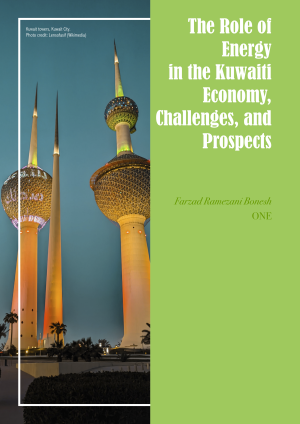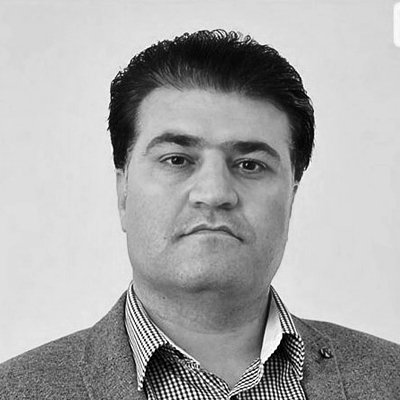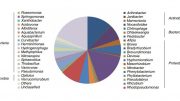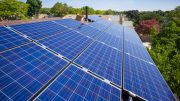 Geographically and geopolitically, Kuwait is a country that borders Iraq and Saudi Arabia on land and Iran on the Persian Gulf, and has rich oil and gas resources.
Geographically and geopolitically, Kuwait is a country that borders Iraq and Saudi Arabia on land and Iran on the Persian Gulf, and has rich oil and gas resources.
The 2035 vision plan seeks economic reforms, diversification, becoming a financial and commercial center, and increasing attractiveness for foreign investors in the sector of strategic industries, including information technology, communication, renewable energy, electricity and water, tourism, healthcare, and education.
Kuwait’s foreign policy, which includes four goals: ensuring security, ensuring stability in the region, solving border problems with neighbors, relations and alliances with the countries of the world, and establishing friendly relations with them, helps energy diplomacy and the development of energy trade.
As part of its efforts to develop and enhance its position, the Government of Kuwait sees energy as a driving force. Therefore, the role of energy in the Kuwait National Development Plan (KNDP) to advance the country towards Vision 2035 is prominent.
With extensive assets exceeding US$1 trillion, the Kuwait Investment Authority (KIA) is a significant financial supporter of the country’s energy sector development.
The approach of the Kuwaiti National Wealth Fund is generally in line with the country’s economic diversification strategies. Foreign direct investment is also expected to grow by 20% in 2024, with growth in key sectors such as technology, renewable energy, and infrastructure.
The mining and quarrying sector accounts for 50.1% of total economic activity. The oil sector is the cornerstone of the country’s economic structure and accounts for more than 90% of government revenue. Kuwait has the sixth-largest oil reserves in the world, with approximately 7% of the world’s proven reserves and about 101.5 billion barrels.
The country is a member of OPEC and plays a central role in global energy policies. As of July 2025, Kuwait, to implement its commitment to ensuring global energy security, called for increased investment in future energy projects and the adoption of solutions to reduce greenhouse gas emissions and support the transition to a more efficient energy system within OPEC.
Kuwait Oil Company (KOC) is the parent company of the government’s operations in the oil sector. Meanwhile, Kuwait has set out its “Oil Strategy 2040” to increase its crude oil production capacity to more than 4 million barrels per day by 2040, invest around $500 billion in the energy sector, develop the Al-Zour refinery complex and develop renewable energy (to provide 15% of electricity needs by 2030 (Kuwait Vision 2035).
In October 2024, Kuwait Petroleum Company (KPC) announced plans for $300 billion in conventional energy projects, such as expanding oil and gas production as well as refining projects, and $110 billion in energy transition projects, including digital transformation, renewable energy, green hydrogen, and carbon capture, utilization, and storage (CCUS).
Kuwait is making major investments to increase capacity.In the 2024/25 fiscal year, Kuwait drilled around 450 new wells. Part of the $400 billion cost to reach oil production capacity of 3.65 million barrels per day in 2035, indicating the newness of this energy sector.
Kuwait also aims to invest more than $ 87 billion to invest in particular in the creation of refineries by 2030, and a global center for petrochemicals, to increase its refining capacity to 1.4 million barrels per day.
The country has also put under consideration priorities such as deepening cooperation with international oil companies, optimizing old assets, progressing in the phased development of new strategic growth plans, reducing cycle times and costs, coordinating with Strategy 2040, and the offshore development strategy to achieve long-term goals.
Natural Gas
Although Kuwait’s natural gas reserves are small compared to its neighbors, Kuwait ranks eighth in terms of natural gas reserves and plans to increase natural gas production to about one billion cubic feet by 2027 and 4 billion cubic feet per day by 2030.
In recent years, it has increased the extraction and exploitation of gas reserves and plans to increase its natural gas production through the development of onshore and offshore natural gas fields.
Recently, Saudi Arabia and Kuwait have begun implementing a massive project to produce gas from the offshore Al-Durrah or Arash field with a goal of producing one billion cubic feet of gas per day and sharing it equally between the two countries, with a cost of about $10 billion.
Kuwait plans to replace part of its electricity production with natural gas power generation, and it even began importing LNG.
Electricity
Kuwait’s per capita electricity consumption is high, and electricity is mainly supplied from fossil fuels. However, Kuwait’s need for electricity production has also increased with population growth, increased water desalination, and summer temperatures.
Kuwait aims to diversify its energy sources and produce more than 15% of its electricity supply from renewable energy by 2030.
The policies of the Ministry of Electricity, Water and Renewable Energy, Kuwait, include incentives for home solar energy, a move towards a 7.4 percent reduction in carbon emissions by 2035, energy diversification and increasing the share of committed renewable energies, achieving carbon neutrality by 2060, and increasing electricity generation capacity to 32 GW in the vision period up to 2035. In the electricity sector, there is a move towards renewable energies, with about 2.6 GW of solar energy set to be put into operation by 2026.
According to the roadmap, at least 17 GW of renewable energy and 25 GW of green hydrogen production capacity should be established by 2050.
Kuwait has also created plans to develop solar and wind energy and plans to produce blue and green hydrogen. Renewable energies will play an important role in Kuwait’s future energy mix, given the high electricity consumption in summer and the potential for solar energy production.
The government has also provided financial incentives and tax breaks for private sector investment in this area, to advance Kuwait’s energy transformation and provide investment attractiveness to shape the country’s energy future.
Outlook
Kuwait expects positive economic growth through 2025 and 2026. The country’s GDP is forecast to grow by 3.3 percent by 2026, with the oil sector growing at an average annual rate of 2.4 percent and the non-oil sector at 2.8 percent.
Kuwait’s long-term challenges are related to oil dependence, diversification, and the timely implementation of reforms, but the country’s economic resilience is underpinned by significant foreign assets.
Apart from Kuwait’s limitations in some areas, the country’s industries are not very extensive and, in many cases, are dependent on foreign industries. The country, however, faces a shortage of local manpower.
Structural challenges, geopolitical tensions, border disputes with Iraq and Iran, climate change and international pressures, heavy dependence on oil, the government’s vulnerability to oil price fluctuations, slow energy reforms, bureaucracy, high domestic consumption, heavy energy subsidies, etc., challenge the achievement of energy goals.
Projects and the 2040 plan reflect Kuwait’s efforts to consolidate its role in the global energy market. The vision is also aligned with the Sustainable Development Goals and emphasizes the promotion of green technologies and renewable energies, balancing economic growth and environmental protection.
Kuwait is moving towards an energy transformation. However, for ultimate success, it is essential to correct shortcomings and develop infrastructure and investment.
In the meantime, achieving the country’s ambitious goals of transforming Kuwait into a world-class refining, petrochemical hub and adopting climate technologies is not far-fetched.
Farzad Ramezani Bonesh





